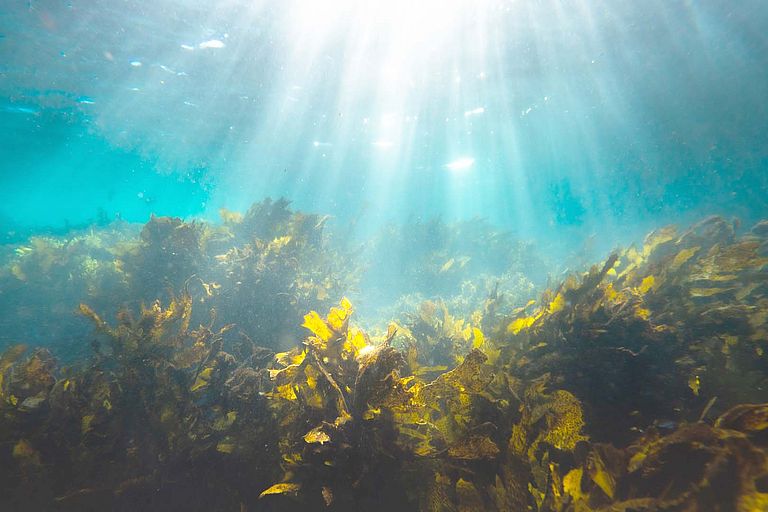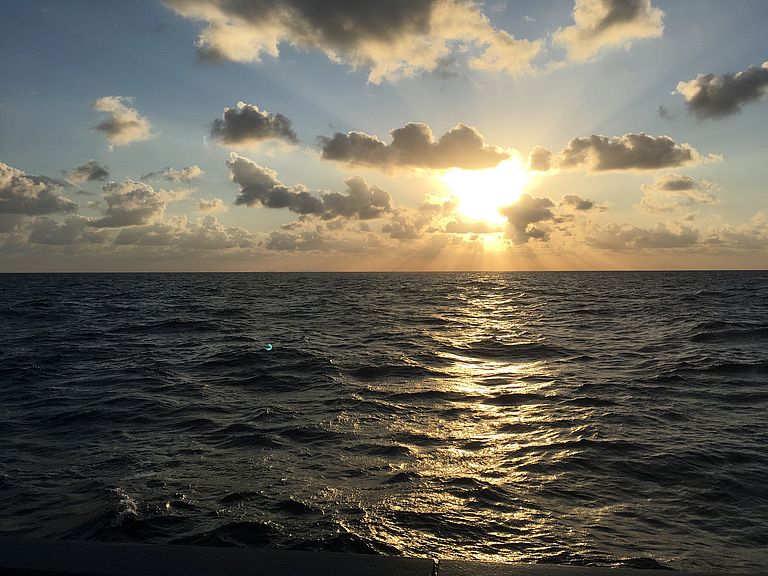For responsible research on marine carbon dioxide removal
New reports on ocean-based methods with GEOMAR participation
Reducing greenhouse gas emissions and limiting global warming are the top priorities of international climate policy. However, as emissions of carbon dioxide (CO2) are continuing to rise, it is now almost impossible to achieve the climate targets agreed upon at the World Climate Conference in Paris in 2015 without removing CO2 from the atmosphere in addition to massively reducing emissions. The ocean is increasingly becoming the focus of national and international research as one component for new methods for carbon dioxide removal: Not only does it take up a large part of human-induced CO2 emissions – it also provides additional options to decrease carbon dioxide concentrations in the atmosphere.
Two reports now released by the US National Academies of Sciences, Engineering and Medicine (NASEM) and the Aspen Institute summarise current knowledge on methods for marine CO2 removal and outline pathways for responsible research and innovation of promising marine CDR concepts. “An important message of the NASEM report is that research not only examines scientific questions about the effectiveness and side effects of different marine CO2 removal methods, but also includes political, social and legal frameworks”, emphasises Professor Dr. Andreas Oschlies. The head of the research unit Biogeochemical Modelling at GEOMAR Helmholtz Centre for Ocean Research Kiel and first spokesperson of the mission “Marine Carbon Storage as a Pathway to Decarbonisation” (CDRmare) of the German Marine Research Alliance was one of twelve scientists involved in the preparation of the report.
“The recommendations of the US science academies are of international relevance”, says Professor Dr. Oschlies. “All of us are faced with the question of how we can meet our climate targets. Research can contribute to decision-making by comprehensively investigating both biological methods, such as the restoration of marine ecosystems, algae cultivation, or even ocean fertilisation, as well as chemical methods, such as alkalinisation of seawater. We do not only investigate the technical and ecological feasibility, but also social, political and legal aspects, conflicting goals and synergies in the context of sustainable use of the ocean.”
In parallel with the NASEM report, the Aspen Institute is publishing a guide to responsible research and innovation on marine CO2 removal methods. Dr. David Keller, Earth System Modeller at GEOMAR and part of the expert panel for the guide explains: “The Aspen report provides some much-needed guidance for responsible research and development and is an important step towards developing a comprehensive code of conduct for research approaches to marine CO2 removal methods.” Dr. Keller also brought in experience from the Ocean-based Negative Emission Technologies (OceanNETs) project, coordinated by him and funded by the European Union. In the project, 14 institutions are working together on important questions regarding the potential and risks of ocean-based methods for CO2 removal.
Professor Dr. Katja Matthes, Director of GEOMAR and board member of the German Marine Research Alliance, welcomes the proposals for an integrative orientation of research: "The ocean is on the one hand affected by climate change and on the other hand part of the solution: it offers us options to remove carbon dioxide from the atmosphere and store it safely. Quantifying this potential, investigating opportunities and risks and identifying sustainable approaches to its possible use is an important part of our research at GEOMAR and in the German Marine Research Alliance. However, it is not enough to conduct excellent science. We also need to share our results with society and provide policymakers with profound knowledge for their actions."
Publications:
National Academies of Sciences, Engineering, and Medicine, 2021: A Research Strategy for Ocean-based Carbon Dioxide Removal and Sequestration. Washington, DC: The National Academies Press. https://doi.org/10.17226/26278.
The Aspen Institute Energy and Environment Program, 2021: Guidance for Ocean-Based Carbon Dioxide Removal Projects: A Pathway to Developing a Code of Conduct. https://bityl.co/9zrs
Background information CDRmare:
In the research mission “Marine Carbon Storage as a Pathway to Decarbonisation” (CDRmare) of the German Marine Research Alliance (Deutsche Allianz Meeresforschung, DAM), about 200 researchers investigate in six collaborative projects in which way and to what extent the ocean can play a sustainable role in the removal and storage of carbon dioxide from the atmosphere. CDRmare (CDR = Carbon Dioxide Removal) is coordinated at GEOMAR Helmholtz Centre for Ocean Research Kiel and the Leibniz Institute for Baltic Sea Research Warnemünde. The research mission is funded by the Federal Ministry of Education and Research (BMBF) with 27 million euros over an initial phase of three years (1.8.2021 – 31.7.2024). Together with its 22 member institutions, the German Marine Research Alliance is developing solution-oriented knowledge and options for action for sustainable management of the coasts, seas and oceans.
Background information OceanNETs:
In the project Ocean-based Negative Emission Technologies (OceanNETs), scientists from 14 institutions in six countries investigate the opportunities and risks of ocean-based technologies for “negative emissions”. The project is funded by the European Union within the Horizon2020 programme (grant no. 869357) with a total of 7.2 million euros and has a duration of five years (01.07.2021 – 31.06.2025). The overall coordination lies with GEOMAR Helmholtz Centre for Ocean Research Kiel.






